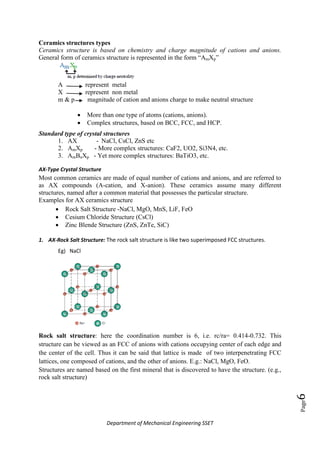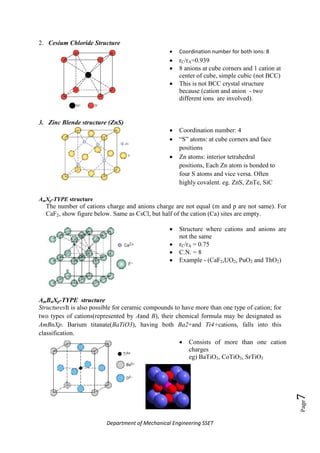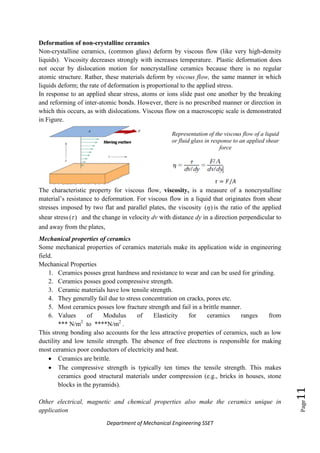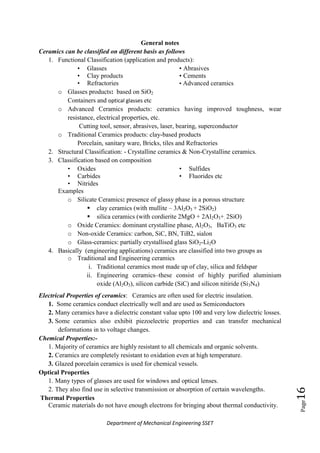The document provides a comprehensive overview of ceramics, discussing their composition (inorganic compounds), bonding types (ionic and covalent), and characteristics such as high melting points and brittleness. It classifies ceramics into traditional and advanced types, detailing their applications in various fields like aerospace, automotive, and electronics. Additionally, it covers crystal structures, imperfections, and mechanisms of deformation in both crystalline and non-crystalline ceramics.

















